
Wolfgang Tillmans, Installation (1992-2018)
Wolfgang Tillmans is one of the most internationally significant artists of his generation. His main medium is photography. He became famous in the 1990s for his photographs featuring European youth culture. Tillmans regards himself as a “Bildermacher” (“picture maker”) who devotes as much attention to his own windowsill as to the world behind it: “Seeing is in itself contemplation about the world.”
His motifs fall into the traditional pictorial categories of portrait, landscape, still life and genre, but they are always fully tangible. His pictures are invariably preceded by a concept, but also by coincidence and productive doubt, for according to Tillmans “photography is always an interpretation of the world”. Creating a photographic image not only requires decisions to be made regarding content, visual aesthetics and moral issues; there is also the question of the technical processes involved. How do light, colours, forms, volumes and surfaces react when they are photographed? What role is played by the camera, the mechanical, chemical and electronic processes, and by the paper as the image carrier, when a seen image is transformed into a printed photograph? Since the turn of the millennium, Tillmans has increasingly been exploring these aspects of photography and reproduction technology in order to produce abstract photographic images without a camera.
Impressions
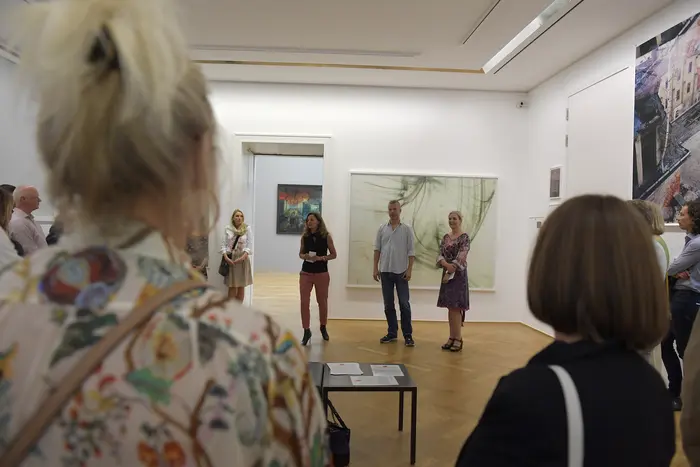
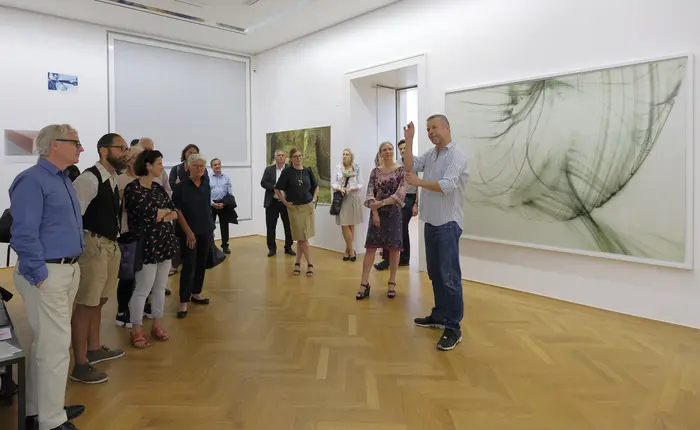


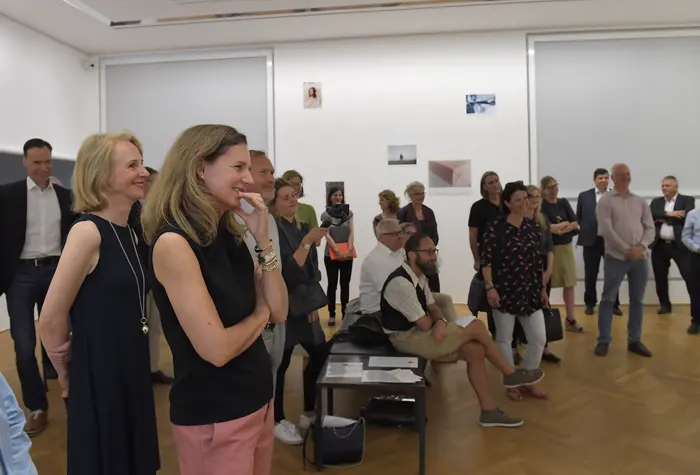


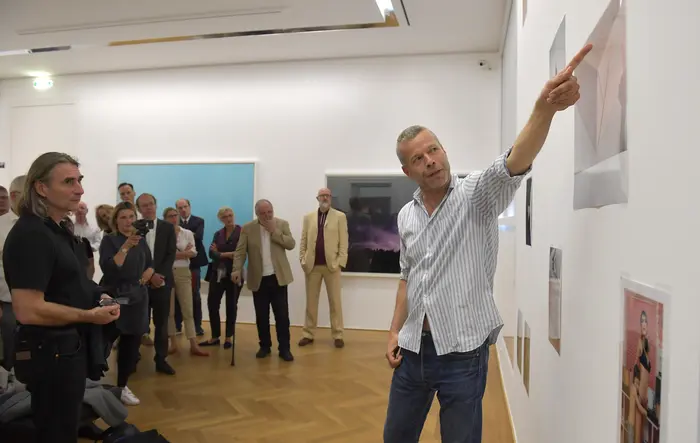
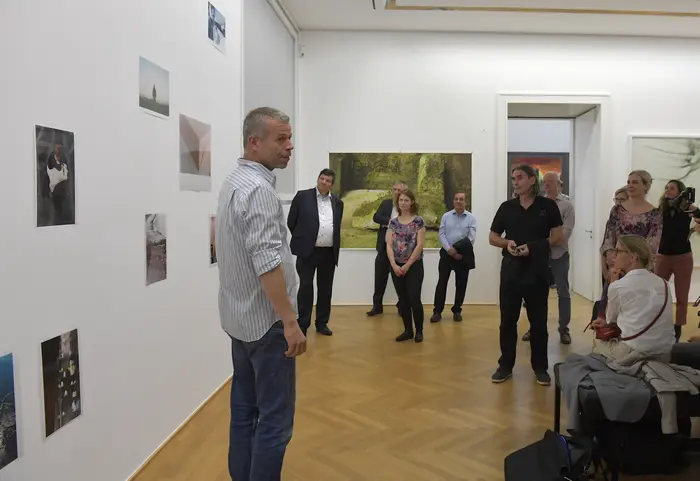
[Translate to English:] Text
In exhibitions Tillmans presents large-scale installations that combine works from different periods and contexts. His selection for the Albertinum consists of 23 photographs produced between 1992 and 2018. Using an unconventional hanging scheme, he combines pictures - both framed and unframed - with different formats and printing techniques. The range of his motifs is highly diverse: landscapes, people, the night sky, thunderstorms, houses, walls, memorial plaques. The phenomenal and the everyday, world history and the family, traditional image concepts and chance observations, documentation and photochemical abstraction function as a resonance chamber for various themes, perspectives and narratives. What they have in common is Tillmans’s “humanist view of the world“, which creates links between man, nature and (hi)story and also reveals (art historical) references to neighbouring exhibition spaces - the war triptychs by Otto Dix and Hans Grundig, as well as Hermann Glöckner’s abstract constructivist works. In the Albertinum his portraits and landscapes, his still-lifes and abstract images come into contact with their elder and younger “relatives”.
The most recent of the works selected for Dresden are derived from his interest in Benjamin Britten’s “War Requiem“ (first performed in 1962 at the consecration of the new Coventry Cathedral) and are concerned with the timeless question of guilt and reconciliation. Coventry and Dresden were both destroyed in enemy air raids during the Second World War. Their common fate exemplifies the cruel logic of war, of the military strategy of aggression and retaliation. Even during the period of rebuilding, in 1959, these two cities established a partnership and sent out a “signal of reconciliation and commitment to peace” across the Cold War divide. In the destroyed Cathedral of Coventry Tillmans photographed a moss-covered stone from the ruin (symbolizing how time grows over the past) and plaques inscribed in English and German with the “Litany of Reconciliation”, a prayer calling for a world without hate, discrimination, violence, envy, greed and arrogance. A universal message appealing for human cooperation in a world that is still plagued by conflicts and wars. Reconciliation that evolves out of a consciousness of history – as testified likewise by two photographs taken in Dresden in November 1998, when the initiative “Weg der Erinnerung” (Path of Remembrance) commemorated the victims of the Pogrom Night in 1938, followed by the laying of the foundation stone for the New Synagogue in Dresden. The aerial photograph of the brightly lit night sky over St. Petersburg links Dresden with its Russian twin city – a relationship that extends back to the 18th century and is embedded in the vicissitudes of Russo-German history.
Like all Tillmans’s installations, the room in the Albertinum is also a place for reflection about claims of photographic objectivity and authenticity, about the potentials and strategies of photography and about the relationship of pictorial images to historical experiences and personal memories.
Exhibition tour with Wolfgang Tillmans
When you play our YouTube or Vimeo videos, information about your use of YouTube or Vimeo is transmitted to the US operator and may be stored. In addition, external media such as videos or fonts are loaded and stored in your browser.

[Translate to English:] Text
Of the 23 works on display here, 14 belong to the Hoffmann Collection, which was donated to the Staatliche Kunstsammlungen Dresden in March 2018. The other nine works were purchased for the Museum by MUSEIS SAXONICIS USUI – Freunde der Staatlichen Kunstsammlungen Dresden e.V. from Tillmans’s installation in the Albertinum.
